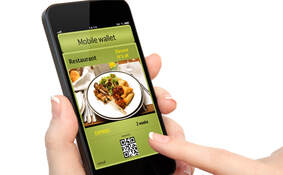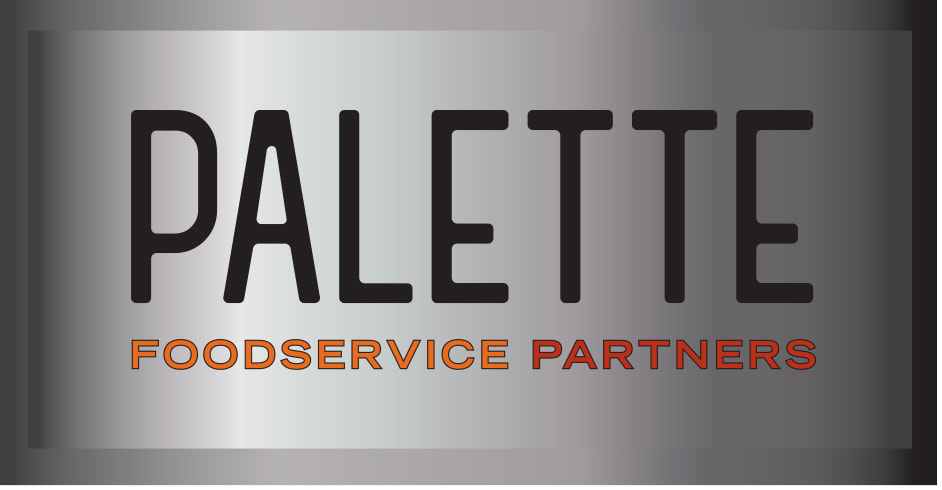 When you consider adopting new technology to help employees monitor and manage different areas of your operation (or for employees to interact with your restaurant, for that matter), make sure it passes the simplicity test. When you pick up a child’s electronic toy, you shouldn’t need an instruction manual to figure out how to use it. The same should be true of your technology. You may well have staff whose native language isn’t English or young staff in charge of a particular function before they really understand what that responsibility means. Your tech should be able to carry some of that load and make the human-facing part as intuitive as possible. Think about features like large buttons, biometric scans that allow people to clock in and out, and the use of multiple languages on your platform so you can eliminate guesswork and the mistakes that may result from that. Could a consumer unfamiliar with your brand step in and understand, broadly, how to use your system? Aim to provide this kind of experience as you develop your tech stack in the years ahead.  Perhaps you have a shift in your restaurant that no staff want to work – a major holiday approaching, a long weekend, or a particular day of the week when you anticipate higher guest traffic and want to have sufficient staff on hand to accommodate it. If you offered surge pricing around that shift, would it change your employees’ minds? Much like how operators are using surge pricing on digital menus to boost profits when guest traffic is high, they can also use workforce management tech to make less-appealing shifts more profitable (and therefore more desirable) for employees. If that tech can also help employees get paid automatically following a shift, even better. As you compete for staff and try to retain your best people, the technology you use to make their experience with you smoother and more profitable can mean the difference between attracting and keeping a new employee and losing that person to the restaurant across the street. What improvements could you make?  We live in an age where businesses prize loyalty and are competing to get it from customers through loyalty programs. There are good reasons for it. These programs encourage repeat guests and boost a restaurant’s guest-retention rate. Retaining guests can mean the difference between thriving and going out of business: Harvard Business School research found that a 5 percent increase in customer retention rates can generate a 25-95 percent jump in profits. But delivering these programs is often imperfect. Guests are looking for a deal and may find loopholes in your program that enable them to reuse promo codes and repeatedly get food for significantly less than it’s worth. This is what happened recently for Mattenga’s, a family-owned chain of six pizza restaurants in Texas. As Enga Stanfield, the owner-operator, shared in an episode of her “Making Dough Show” on Youtube, a twice-weekly guest at their restaurant was able to take advantage of a loophole in their POS and use a promo code 19 times in different Mattenga’s locations over a short period. As a result, he was paying no more than a couple of dollars for each of his meals. Staff alerted Stanfield to the issue and she decided to “fire” the guest – a necessary step at times, even in a business built around pleasing customers. But she did it in a way that took ownership for the flaw in their system and also protected staff. She emailed the person and said they could no longer serve him. But she explained that the promo code issues were their fault – they were working on correcting them but could not afford a more advanced system at the moment. She went on to say that as a family-owned business, Mattenga’s cannot serve him and still afford to pay staff and cover other costs. She then explained, professionally, that she had instructed managers to refuse him service going forward, even if he pays full price, and that any of his friends or family who misuse the system will be refused service as well. If he comes into their restaurant and makes a scene, staff will call the police. It’s a situation you may encounter with guests who feel entitled – and how you handle it can impact profits, as well as the quality of your work environment.  Recruiting and retaining staff is challenging enough on its own right now – but it becomes all the more difficult if you’re still using manual processes to manage it. Are there manual processes you could stand to weed out of your operation? A recent webinar from SmartBrief about workforce engagement tools for the hospitality industry described the benefits of a tech-based alternative. Consider this: A person who is already passionate about your brand comes in to pick up an order. They see an in-store (or perhaps an in-app) sign advertising open positions. With the scan of a QR code, they access an application, which is streamed differently depending on the responsibilities of their desired position. They apply quickly, with a minimum of scanning and scrolling. After a successful interview, they complete all necessary forms online on their own time – and avoid wasting time in the restaurant prior to starting work or having to distract the manager on duty with questions. On the person’s first day of work, your restaurant’s app sends them a message explaining what it’s like to work in your organization. Over the next few months, it continues to check in to ask about training and point out ways to easily get information, swap shifts or ask for time off, and connect with other people. It can send out pulse surveys to get an ongoing read on how the person is doing and where concerns could be lurking. If the person clocks in late a few times in a row, your app can alert a busy manager, who can then make an effort to understand where there might be a problem and offer support. Down the line, it can send out messages or little rewards on birthdays and work anniversaries. Could this help you? Consider the snags in your recruitment and retention processes. Are you mired in any time-consuming paperwork? Is it difficult for your managers to monitor every employee’s performance and anticipate who is struggling? Do you know which staff are disengaged? There are tools to help you smooth out these bumps – and they may help you not only reach good potential staff, but also stand a better chance of holding on to them for longer.  New research from Deloitte suggests that many diners are open to eating in restaurants that use labor-saving devices or other technological automation – with 58 percent of consumers aged 18-38 saying they’d return to restaurants that use automation, compared to 42 percent of customers over the age of 39. Keep in mind that automation need not mean bringing in robotic cooks or servers, or even making eye-watering financial investments. Restaurants are approaching automation in a wide range of ways – in the back and front of house, both food-facing and not. A recent podcast from The Spoon shared the story of how pizza restaurant owner Andrew Simmons began adopting automation in a piecemeal way to sustain his brand when the pandemic hit – and how he now plans to launch a 100-unit restaurant chain built using off-the-shelf restaurant technology. Consider what your guests value most about your brand – and how automating even small tasks might help you elevate what you do best and minimize the things that can stand in your way.  The fees charged by third-party delivery providers can take a painful bite out of already-slim restaurant profits. But your tech can make it easier and more appealing for customers to come straight to you. A recent report from QSR Magazine points to how the hotel industry has successfully done a similar thing over the years. Consider some value-added offerings that don’t cost you much but lift the experience you give to guests who order food directly from you. That could be offering a free drink with orders placed via your website or app – or subsidizing all or part of the delivery fee. Lean on your loyalty program to hook your customers. They have little reason to go elsewhere if they know you’re prompting them with targeted offers that are likely to appeal to them based on their past orders. Attract customers to your restaurant by providing enough appealing menu items on third-party delivery sites to entice them, but save a good number of options for the menu you use for your direct customers – and promote the benefits of coming to you directly. No one likes missing out.  The National Restaurant Association estimates that the average restaurant loses $150,000 annually in staff turnover. Further, 70 percent of operators are struggling to hire new staff, so it’s crucial for operators to improve employee recruitment and retention – and to find ways to do it that look different from what they have tried before. Research shared during a recent webinar from Nation’s Restaurant News indicated that restaurant operators are making a number of labor-specific investments in technology in a direct effort to boost retention by making restaurant jobs feel more like careers. By and large, these changes are not designed to reduce headcount; rather, they are about automating parts of the job that employees aren’t as good at, find tedious, or both. Restaurants can reap significant benefits if they find ways to think long term about transforming restaurant service in ways that maximize the parts of it that staff enjoy most (and make the tougher parts of the job more accessible). According to a report from The Takeout, staff tend to find the relationship-building parts of the job most fulfilling: getting to know repeat customers as friends, discovering what they appreciate about the business, and bonding with them over the ingredients and techniques used across the menu. Do you know what aspects of the job led your staff to you? If it’s simply the chance to earn a paycheck, how can you make the job about more than that? If you can’t delegate any of your most tedious tasks to tech, can you reform your training to make those tasks easier? Where possible, take steps in the right direction – even if you don’t have the budget to invest in tech right now.  At a time when technology improvements are happening quickly and so many restaurants are operating with skeleton crews, being able to delegate orders to a chatbot who can work 24 hours a day and try to upsell every single order is tempting. But the evolution of restaurant chatbots hasn’t been the smoothest, and while the technology will continue to improve, restaurant operators sitting on the fence about the technology may be okay waiting a bit longer for the kinks to be ironed out (or for consumers to simply get used to using it). Case in point: A recent report from the Wall Street Journal detailed the guest response to White Castle’s new “Julia” chatbot. While Julia is easing the burden on staff and enabling speedier service, some guests are chafing at her folksy language patterns and persistence in encouraging add-ons to orders every single time. When testing this kind of technology, it’s worth examining the nuances of guest interactions with it – the larger orders it generates may not tell the whole story.  The fast-evolving developments in generative artificial intelligence have triggered both excitement and anxiety for businesses in recent months. Survey research from Nation’s Restaurant News found that among restaurant operators, there is an appetite for AI but also a knowledge gap when it comes to putting the technology into practice: 41 percent of operators are not using AI but want to, while 27 percent aren’t using AI and don’t plan to. What’s important to realize is that using AI may not even be a choice you have to make. It is already baked into many kinds of software we rely on each day. We are likely using AI without realizing it – and the new technologies and tools we come to depend on to manage all aspects of the restaurant business will evolve to include it as well. Using AI may be as simple as pulling comprehensive forecasts from your POS. Your use of AI may not feel futuristic or flashy, but that doesn’t mean it won’t be powerful for your business.  As restaurant operators know, money is made at the back of the house. The steps you take to get a better handle on everything from portioning food to managing inventory translate into important savings. Adopting tools to monitor waste is a big one. Research from the Natural Resources Defense Council estimated that 22-33 billion pounds of food is wasted by restaurants every year, with about 7 percent of it wasted before it even reaches the customer. To get a better handle on how much food you’re wasting, you have to track all possible sources of it. A report from The Rail advises operators to have staff keep a log – ideally a mobile app connected with your inventory management software – of every instance of spills, misfires, burned or ruined orders, spoiled or expired ingredients, comped meals, theft, and scraps from paring, cutting or butchering. Patterns may emerge from this that allow you to zero in on the habits and practices that generate waste for you. |
Subscribe to our newsletterArchives
April 2024
Categories
All
|



 RSS Feed
RSS Feed